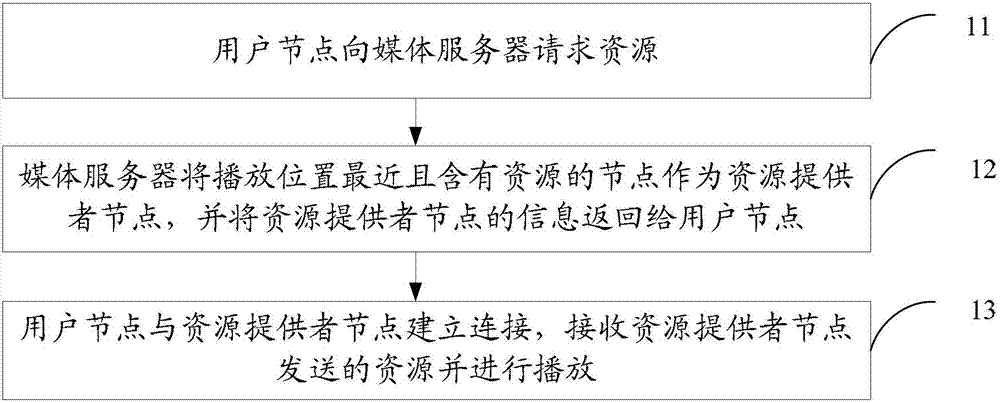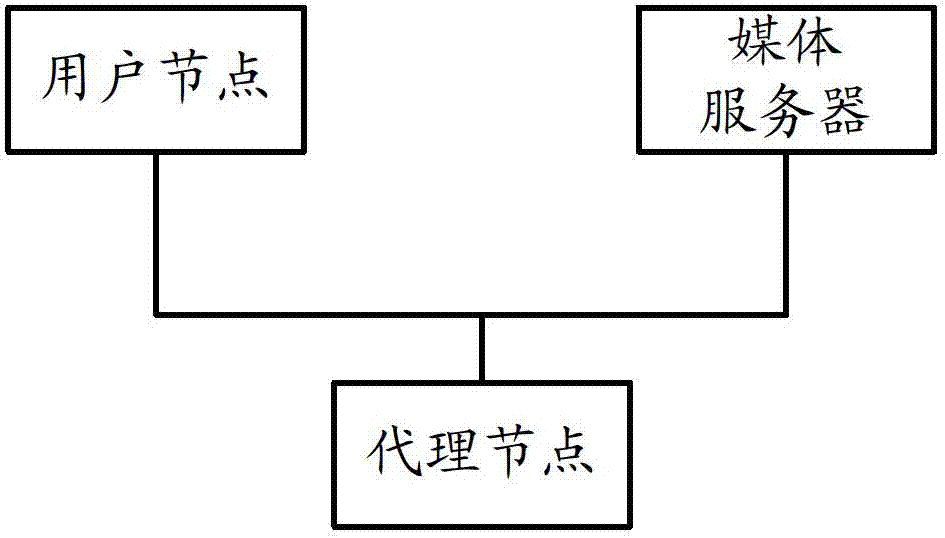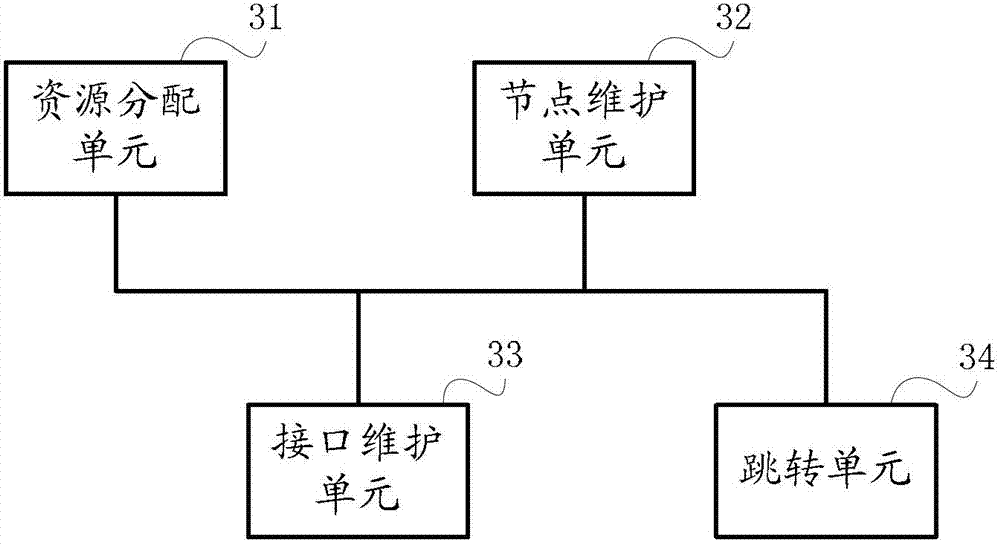Video on demand (VOD) method, system, agent node and media server
A media server and proxy node technology, applied in image communication, selective content distribution, electrical components, etc., can solve the problem that the video-on-demand system cannot support fast resource provider search and self-optimization, so as to improve scalability and Robustness, reduced waiting delay, and reduced load effects
- Summary
- Abstract
- Description
- Claims
- Application Information
AI Technical Summary
Problems solved by technology
Method used
Image
Examples
Embodiment 1
[0061] Such as figure 1 As shown, it is a schematic flow chart of the video-on-demand method provided by the embodiment of the present invention, specifically as follows:
[0062] Step 11, the user node requests resources from the media server.
[0063] In this embodiment, the user node is a common node (mobile node), and the user obtains and plays video resources through the common node. The user node can be the user's personal computer or other devices that can access the network to realize video playback. According to the characteristics of the P2P network, each user node can establish a connection with other user nodes and share the video information it owns. Each user node can also obtain the video information content it needs from other user nodes for playback. The specific algorithm can refer to the basic principles of the mobile Ad-hoc network and the P2P network, which are well-known technologies in the prior art, and will not be repeated here.
[0064] In this em...
Embodiment 2
[0143] Such as figure 2 As shown, the present embodiment provides a kind of video on demand system, and this system comprises user node and media server, specifically as follows:
[0144] User nodes can provide the required video resources to each other.
[0145] After the user node requests resources from the media server, it is mapped to a grid space composed of multiple user nodes; the grid space includes multiple grid areas, and each grid area corresponds to a video resource divided by video resources Each user node that requests and plays the video resource block is mapped to a grid area.
[0146] The media server is used to store video resources, receive resource requests from user nodes, and forward resource requests from user nodes to user nodes in corresponding grid areas.
[0147] The media server is also used to provide the requested resource directly to the user node when the media server cannot find a user node that owns the requested resource.
[0148] In par...
Embodiment 3
[0152] Such as image 3 As shown, this embodiment provides a proxy node, including a resource allocation unit 31 and a node maintenance unit 32, specifically as follows:
[0153]The resource allocation unit 31 is configured to allocate to the user node the resource provider node with the closest playing position and containing the resource according to the request of the user node.
[0154] The node maintenance unit 32 is configured to maintain information of all user nodes in the grid area to which it belongs.
[0155] In particular, the above-mentioned proxy node further includes an interface maintenance unit 33, configured to maintain static interfaces and dynamic interfaces between the grid area to which it belongs and other grid areas.
[0156] In particular, the above-mentioned proxy node also includes a jump unit 34, which is used to select a new proxy node in the grid area node according to the user's interest in playing video when the proxy node jumps and transfer th...
PUM
 Login to View More
Login to View More Abstract
Description
Claims
Application Information
 Login to View More
Login to View More - R&D
- Intellectual Property
- Life Sciences
- Materials
- Tech Scout
- Unparalleled Data Quality
- Higher Quality Content
- 60% Fewer Hallucinations
Browse by: Latest US Patents, China's latest patents, Technical Efficacy Thesaurus, Application Domain, Technology Topic, Popular Technical Reports.
© 2025 PatSnap. All rights reserved.Legal|Privacy policy|Modern Slavery Act Transparency Statement|Sitemap|About US| Contact US: help@patsnap.com



